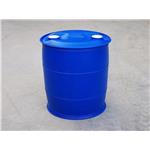Methylthioethane, also known as Ethyl methyl sulfide (abbreviation EMS), is an ether compound with a sulphur-type odour that can be used as a food additive, odourant, and fuel. The reaction products of photolysis of EMS, in decreasing order of importance, are C2H6, CH3SSC2H5, C2H6, CH3SSC2H5, C2H5SSC2H5, CH4, CH3SCH3, C2H5SC2H5, C3H8, C2H4, CH3SSCH3, C4H10, C2H5SH, and CH3SH. In addition, the destruction efficiencies of the EMS pyrolysis and oxidation in a flow reactor were 50% and 99%, respectively. Hydroperoxides and the corresponding peroxyl radicals are important intermediates in the partial oxidation of EMS during atmospheric chemistry and combustion processes.
Methyl ethyl sulfide has a cabbage-like odor.
Reported found in tomato, cooked chicken, beef and pork, rum, bourbon, whiskey, cocoa and coffee
Ethyl Methyl Sulfide is used as a corrosion inhibitor for zinc metal which finds wide applications like electrode material in batteries, sacrificial anodes and metallic coatings. It is used in mixtures designed to odorize natural gas and is made to by-pass injection system.
Aroma characteristics at 0.1%: sulfurous, tomato and cabbage vegetative with dimethyl sulfide, meaty and
metallic nuances.
Taste characteristics at 0.25 to 2 ppm: sulfurous, vegetative, dimethyl sulfide-like sweet corn notes, eggy,
meaty and clam nuances
Microwave spectra of the trans isomer of ethyl methyl sulfide and its 10 isotopic species has been investigated. Chlorination of ethyl methyl sulfide with N-chlorosuccinimide and sulfuryl chloride has been reported.



